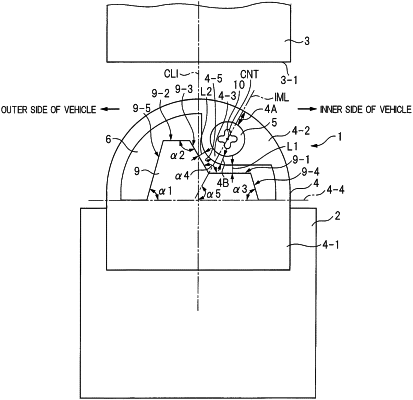| CPC E05F 15/46 (2015.01) [E05F 15/443 (2015.01)] | 20 Claims |

|
1. A pinch detection switch comprising one tubular pressure-sensitive detection member having a first hollow portion and a plurality of electrode wires spaced apart from one another by the first hollow portion, the plurality of electrode wires being formed in a spiral shape extending along a longitudinal direction of the pressure-sensitive detection member, and a cover member covering the pressure-sensitive detection member,
wherein, when the cover member is viewed in cross section, the cover member comprises a base portion, a second hollow portion, and a deformation portion provided on the base portion so as to cover the second hollow portion of the cover member,
the pressure-sensitive detection member is arranged in the deformation portion,
a receiving portion configured to receive the pressure-sensitive detection member is arranged on the base portion,
the receiving portion has at least two substantially planar receiving surfaces formed at positions facing the pressure-sensitive detection member, the at least two receiving surfaces being configured to receive the pressure-sensitive detection member, and
wherein, when the cover member is viewed in cross section, the receiving portion has a protruding shape protruding in a stepwise manner from the base portion toward the deformation portion, and
in the protruding shape, an upper surface and an inclined surface facing the pressure-sensitive detection member act as the two receiving surfaces.
|